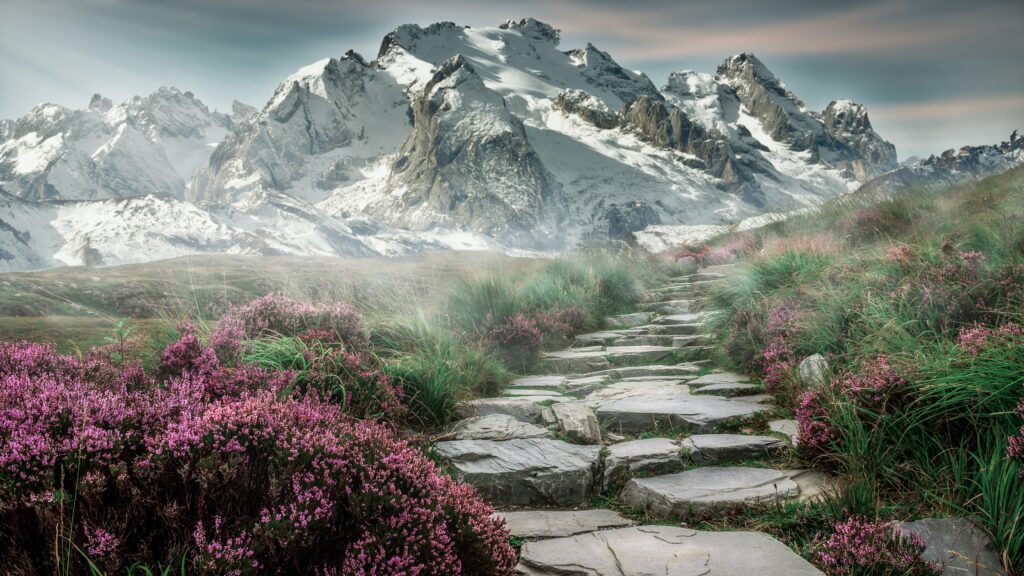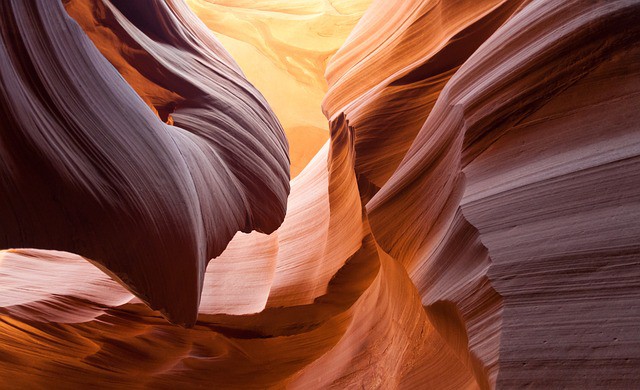The Earth is a dynamic planet that is constantly changing, shaped by geological processes such as erosion, weathering, and tectonic activity. These processes have given rise to a wide variety of landforms that are diverse in size, shape, and location. In this blog post, we will explore the different types of landforms found on Earth and their unique characteristics.
Mountains

Table of Contents
Mountains are elevated landforms that rise steeply above the surrounding terrain. They are typically higher than 2,000 feet and have steep slopes and rugged terrain. Mountains can be formed through tectonic activity, volcanic activity, or erosion. They can be found on every continent and are home to unique ecosystems and wildlife. Some of the world’s most famous mountain ranges include the Rocky Mountains in North America, the Himalayas in Asia, and the Andes in South America.
Plateaus
Plateaus are large, flat areas of elevated land that are higher than the surrounding terrain. They are generally larger than a mountain but smaller than a continent. Plateaus are formed through tectonic activity or erosion. They can be found on every continent and are often characterized by unique geological formations and ecosystems. Examples include the Tibetan Plateau in Asia, the Altiplano in South America, and the Colorado Plateau in North America.
Valleys
Valleys are low areas of land located between two higher points such as mountains or hills. They are typically formed through erosion or the movement of glaciers. Valleys can be narrow or wide, and their floors can be flat or sloping. They are often home to unique ecosystems and wildlife. Examples include the Grand Canyon in North America, the Rift Valley in Africa, and the Great Glen in Scotland.
Canyons
Canyons are deep, narrow valleys with steep sides. They are typically formed by erosion from rivers or other natural forces. Canyons can be found in deserts, mountains, and plateaus. They are often characterized by unique geological formations and are popular tourist destinations. Examples include the Grand Canyon in North America, the Fish River Canyon in Namibia, and the Colca Canyon in Peru.
Plains
Plains are large areas of flat or gently rolling land. They are typically formed through sediment deposition or erosion. Plains can be found on every continent and are often used for agriculture and human settlement. Examples include the Great Plains in North America, the Pampas in South America, and the Australian Outback.
Deserts
Deserts are dry, barren areas of land that receive little to no precipitation. They are typically formed by a combination of factors, including geography, climate, and weather patterns. Deserts can be found on every continent and are home to unique ecosystems and wildlife. They are often characterized by extreme temperatures and harsh environmental conditions. Examples include the Sahara in Africa, the Gobi in Asia, and the Mojave in North America.
Islands
Islands are pieces of land surrounded by water. They can be formed through volcanic activity, tectonic activity, or erosion. Islands can be found in oceans, seas, and lakes and can vary in size from small rocks to large land masses. They are often popular tourist destinations and are home to unique ecosystems and wildlife. Examples include Hawaii in the Pacific Ocean, Iceland in the North Atlantic, and New Zealand in the South Pacific.
Peninsulas
Peninsulas are pieces of land surrounded by water on three sides. They are typically formed through erosion or tectonic activity. Peninsulas can be found on every continent and are often popular tourist destinations. They are often characterized by unique geological formations and are home to unique ecosystems and wildlife. Examples include the Iberian Peninsula in Europe, the Arabian Peninsula in Asia,the Yucatan Peninsula in North America.
Capes
Capes are narrow pieces of land that extend into a body of water. They are typically formed through erosion or tectonic activity. Capes can be found on every continent and are often popular tourist destinations. They are often characterized by unique geological formations and are home to unique ecosystems and wildlife. Examples include Cape of Good Hope in Africa, Cape Cod in North America, and Cape Horn in South America.
Glaciers
Glaciers are large bodies of ice that move slowly over land. They are formed by the accumulation of snow and ice over time. Glaciers can be found on every continent and are often characterized by unique geological formations. They are home to unique ecosystems and are important indicators of climate change. Examples include the Patagonian Ice Sheet in South America, the Greenland Ice Sheet in North America, and the glaciers of the Himalayas in Asia.
Volcanoes
Volcanoes are openings in the Earth’s crust through which molten rock, ash, and gas escape. They are typically formed through tectonic activity or hotspots. Volcanoes can be found on every continent and are often characterized by unique geological formations. They are home to unique ecosystems and can be dangerous to humans. Examples include Mount Everest in Asia, Mount Kilimanjaro in Africa, and Mount Fuji in Japan.
Conclusions
In conclusion, the Earth’s natural features are diverse and fascinating. From mountains to deserts, glaciers to volcanoes, each landform has its own unique characteristics and contributes to the planet’s dynamic and ever-changing landscape. Understanding these landforms is important not only for their scientific value but also for their cultural, economic, and ecological significance.
15 Multiple Choice Question
Sure, here are 15 more MCQ questions for SSC CGL on Landforms and their Types:
- Which of the following is an example of a volcanic landform?
A) Canyon
B) Glacier
C) Plateau
D) Volcanic Cone
Answer: D) Volcanic Cone - Which of the following is a type of coastal landform?
A) Glacier
B) Plateau
C) Peninsula
D) Valley
Answer: C) Peninsula - What type of landform is characterized by steep sides and a flat top?
A) Mesa
B) Butte
C) Plateau
D) Canyon
Answer: A) Mesa - Which of the following is an example of a erosional landform?
A) Fault
B) Delta
C) Sand Dune
D) Sinkhole
Answer: C) Sand Dune - Which of the following landforms is created by the accumulation of sediment at the mouth of a river?
A) Island
B) Archipelago
C) Delta
D) Atoll
Answer: C) Delta - Which of the following is a type of glacial landform?
A) Sinkhole
B) Fjord
C) Archipelago
D) Cavern
Answer: B) Fjord - Which of the following landforms is characterized by a flat area surrounded by steep slopes?
A) Plateau
B) Valley
C) Mesa
D) Butte
Answer: A) Plateau - Which of the following is a type of karst landform?
A) Fjord
B) Cave
C) Archipelago
D) Barrier Reef
Answer: B) Cave - Which of the following landforms is created by the folding and faulting of rock layers?
A) Mesa
B) Plateau
C) Valley
D) Mountain
Answer: D) Mountain - Which of the following is a type of desert landform?
A) Dune
B) Canyon
C) Fjord
D) Butte
Answer: A) Dune - Which of the following is an example of a coastal erosional landform?
A) Archipelago
B) Delta
C) Headland
D) Mesa
Answer: C) Headland - Which of the following is a type of volcanic landform that forms when lava cools and hardens on the surface?
A) Butte
B) Mesa
C) Plateau
D) Lava Flow
Answer: D) Lava Flow - Which of the following is an example of a riverine landform?
A) Barrier Reef
B) Floodplain
C) Dune
D) Fjord
Answer: B) Floodplain - Which of the following landforms is formed by the erosion of a plateau by a river?
A) Canyon
B) Delta
C) Lagoon
D) Estuary
Answer: A) Canyon - Which of the following is a type of coastal depositional landform?
A) Lagoon
B) Cavern
C) Sinkhole
D) Cenote
Answer: A) Lagoon


